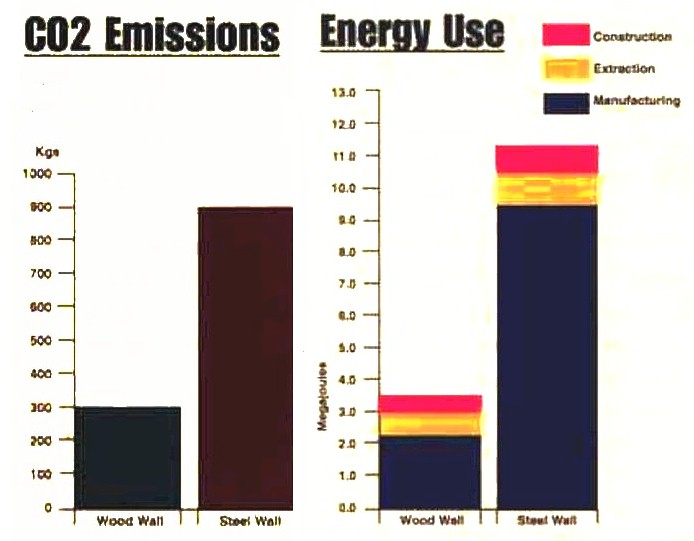Pine Log Prices For 20/7/98
I Pine for You...A handful of pine-seed will cover mountains with the green majesty of a forest. I, too, will set my face to the wind and throw my handful of seed on high. - Fiona MacLeod
...at a PricePine Log PricesPrices for week beginning 20 July 1998Price delivered to mill or wharf (dollars per tonne)
NOTES CHANGES: Since 15 June 1998
Chipping InTo me a lush carpet of pine needles is more welcome than the most luxurious Persian rug. - Helen Keller Some interesting news from industry sources:
Source: Greenplan Timber Talk
Unfortunately, the good ship Flat Rock Forests Trust was unable to weather her personal storm and sank before any economic rescue arrived.
What's Wood Good for?You can live for years next door to a big pine tree, honoured to have so venerable a neighbour, even when it sheds needles all over your flowers or wakes you, dropping big cones onto your deck at still of night. - Denise Levertov The Environment!Wood compares very favourably with other structural building materials. In their manufacture and use wood products consume less ozone-depleting fossil fuel than do competing materials such as steel, aluminium, plastic or concrete. Also wood processing requires less water and releases fewer harmful chemicals into the air and water. A Canadian study compared the environmental impacts of two 90 square metre wall assenblies, one made from wood and the other from steel. As the graph illustrates the wood wall required 1/3 as much energy as the steel wall to manufacture. The steel wall also produced 3 times the volume of CO2 emissions as the wood wall. Other findings included the fact that harmful air emissions were considerably higher for the steel wall and that steel required 25 times as much water during the manufacturing process. Apart from these technical considerations it is also important to consider that trees provide the only renewable building material (other than ice used in igloos!). Trees can be grown and regrown. Trees' growth is fuelled by the energy of the sun which is free. And as trees grow they provide immeasurable benefits in terms of aesthetic pleasure, shade, wildlife habitats and by cleaning the air we breathe.
The above chart purporting to show that wood is good for the environment was also taken from the Greenplan sales brochure. I include it here merely to illustrate that, logically, forestry should be a good investment. The fact is that it was not a good investment for us, dear Unitholder. However, the fault lies not with the trees...
For news articles on the Flat Rock Forests Trust, forestry, the Serious Fraud Office, one immigrant family's experiences, immigration
specialists, fraud, juries, logging, and more, check out the News Table of Contents. Or
you may wish to visit the Forestry Trust Table of Contents to read how a unit trust went
bust. Or the Topics Table of Contents which offers a different approach to lots
of topics - among them poisonous insects, eating dogs, what's addictive, training vs teaching, tornados, unusual flying machines, humour,
wearable computers, IQ tests, health, Y chromosomes, share options, New Jersey's positive side, oddities, ageing, burial alternatives,
capital punishment, affairs, poverty, McCarthyism, the most beautiful city in the world, neverending work and more... |
 Animals
Animals Animation
Animation Art of Playing Cards
Art of Playing Cards Drugs
Drugs Education
Education Environment
Environment Flying
Flying History
History Humour
Humour Immigration
Immigration Info/Tech
Info/Tech Intellectual/Entertaining
Intellectual/Entertaining Lifestyles
Lifestyles Men
Men Money/Politics/Law
Money/Politics/Law New Jersey
New Jersey Odds and Oddities
Odds and Oddities Older & Under
Older & Under Photography
Photography Prisons
Prisons Relationships
Relationships Science
Science Social/Cultural
Social/Cultural Terrorism
Terrorism Wellington
Wellington Working
Working Zero Return Investment
Zero Return Investment
